#elasmotherium
Text


Agathized (Rock/Gound) & Opalized (Rock/Ice) fossil pokemons
During the formation of a fossil, due to the minerals in the area, a fossil can become agatized or opalized, this means that the resulting fossil can have parts made out of agathe or opal, giving them an iridiscent look

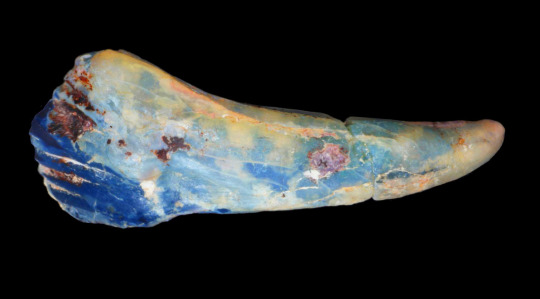
Due to this process, this 2 fossil pokemons after being revived had some of their body parts completely replaced by the minerals
The Agatized fossil (Rock/Ground) is based on the Doedicurus Clavicaudatus
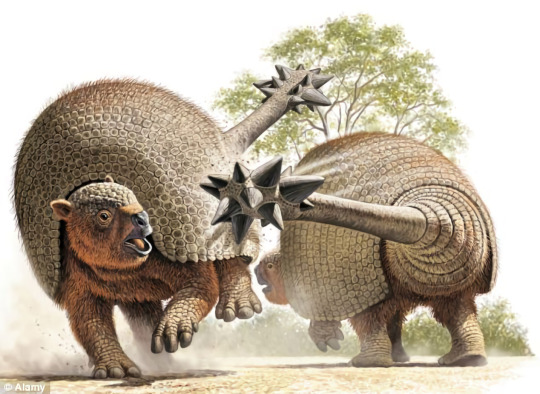
The Opalized fossil (Rock/Ice) is based on the Elasmotherium Sibiricum

#pokemon#fakemon#fake pokemon#fossil pokemon#fossil fakemon#fossil#agathe#opal#agatized fossil#opalized fossil#elasmotherium#glyptodon#doedicurus#rock type#ground type#ice type#rock pokemon#ice pokemon#ground pokemon#ground fakemon#ice fakemon#rock fakemon#cenozoic#megafauna
2K notes
·
View notes
Text
thanks guys, it did help a lot, drawing creatures is something i really enjoy

@reginaldubel @magicalmysteryperson @scriboniuscurio @thehipovercor @dinojagger12 added a few from discord friends and of my own (damn i misspelled sanqiaspis again)
#my art#creature design#dinosaur#paleo#paleoart#paleo art#scipionyx#dimorphodon#jaekelopterus#longisquama#elasmotherium#myotragus#dimetrodon#sanqiaspis#cambropachycope
350 notes
·
View notes
Text

Sketches of some Eurasian animals that were part of the famous Pleistocene Megafauna, from bottom to top: Crocuta crocuta spelaea, Bos primigenus, Elamotherium, Ursus spelaeus, and Mammuthus trogontherii
#paleoart#paleontology#pleistocenemegafauna#pleistocene#elasmotherium#cave hyena#cave bear#mammuthus#mammoth#mammal paleontology#mammoths#mammuthus trogontherii#aurochs
78 notes
·
View notes
Text
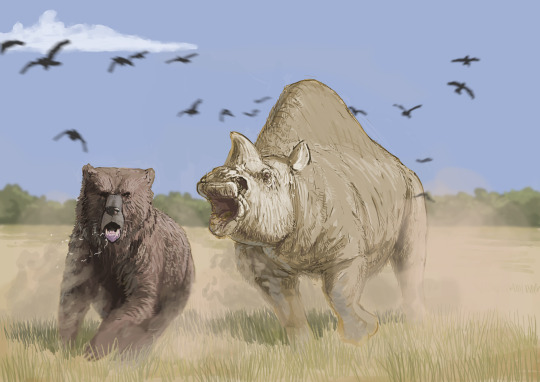
Another #paleostream sketch
Ursus ingressus made a mistake and is now running from an angry Elasmotherium.
206 notes
·
View notes
Text

Cryptid of the Day: Elasmotherium
Description: The Elasmotherium has been extinct around 50,000 years ago, yet one tale from medieval traveler Ibn Fadlan has some thinking the beast survived to human record. According to Fadlan, he heard of a bull like horned animal that’s said to live near the Volga river. Though Fadlan admits what people could have seen was a rhino.
71 notes
·
View notes
Text
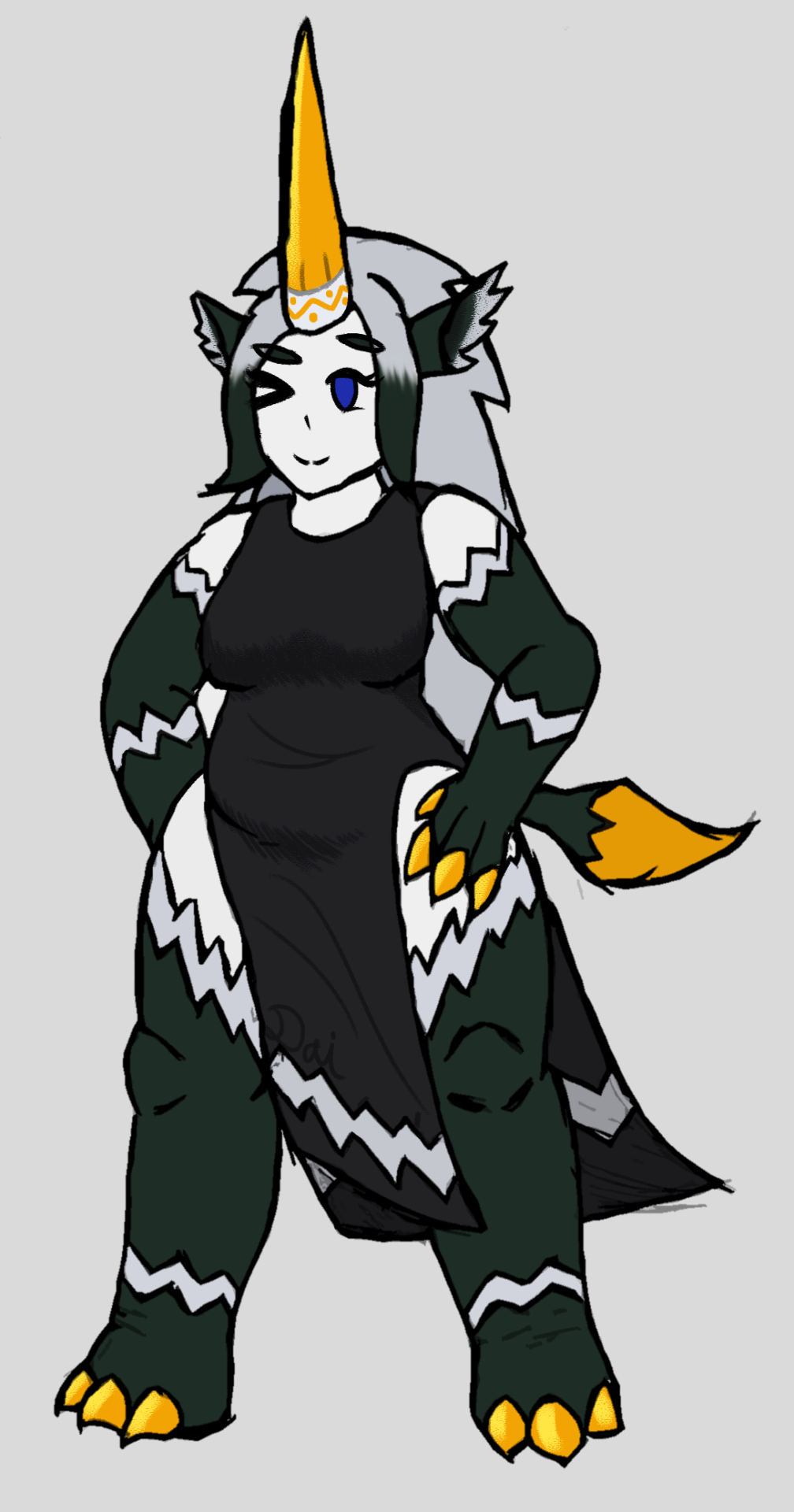
Day 9! I made a lady out of the Fossil Fighters vivosaur, Elasmoth. Wooly unicorn lady!
#art#digital art#doodle#monsterfolk#monster girl#fossil fighters#vivosaur#elasmotherium#wooly unicorn
34 notes
·
View notes
Text

I wanted to add this masterpiece back from November 23, 2021
An Elasmotherium have a nubby horn!
68 notes
·
View notes
Text
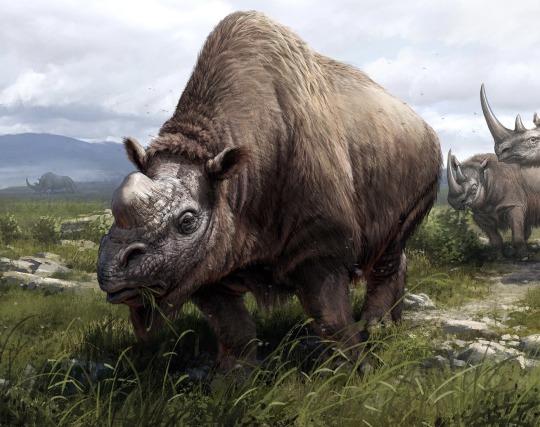
†Siberian unicorn (Elasmotherium sibiricum)
Art credit: Beth Zaiken
This mammoth-sized, horned, shaggy beast probably isn’t what comes to mind when you think of a unicorn! It lived on the cold Eurasian steppe tens of thousands of years ago, and was well-adapted to eating grass. It is traditionally thought to have had a huge, long singular horn projecting from its forehead, but a recent analysis found the horn was probably much shorter, and may even have acted as a resonating chamber, able to enhance calls! So, it’s getting less like a unicorn by the day…
#markhors-menagerie#animal facts#animals#biology#fun facts#palaeontology#prehistoric animals#ungulates#odd toed ungulates#rhinoceros#Siberian unicorn#elasmotherium
26 notes
·
View notes
Text

Tierbuch by Wilhelm Bölsche. 1908. Illustrated by Heinrich Harder.
219 notes
·
View notes
Text

The Unicorn - by Eurwentala
It's late May in the mammoth steppe somewhere in Eastern Europe, about 40,000 years ago. The steppe is in bloom with carnations, buttercups, goat's-beards, and wild chives. A lonely Elasmotherium sibiricum has alarmed the lapwings (Vanellus vanellus) by walking too close to their nests hidden among the grass. The giant rhinoceros has still matted strands of winter fur hanging from it's coat.
Elasmotherium, the great one-horned rhino of Pleistocene Eurasia, has been suggested as the origin of the unicorn myth. It has been speculate to have lived into historical times, supported by some interesting, though vague historical records of giant one-horned bulls and Chinese depictions of big, dark unicorns. There is also a probable cave painting from France, on which this reconstruction is mostly based. The painting's location in France is a bit of a mystery, though, as there are no known fossils from Western Europe.
12 notes
·
View notes
Text
The Siberian Unicorn

Reconstruction of an Elasmotherium, an extinct species of rhino that lived in the Eurasian area in the Late Pliocene and Pleistocene eras (around 39,000 years ago).
This animal could have been the basis for the unicorn myth that has persisted for thousands of years.
The Giant Siberian Unicorn, also known by its scientific name, Elasmotherium (E. sibiricum), is an extinct species of giant rhinoceros that had an extremely large horn on its forehead and a body covered in shaggy fur.
It was first named by Johann Gotthelf Fischer von Waldheim (13 October 1771 – 18 October 1853) in 1808. He was the director of the Natural History Museum in Moscow.
The Giant Siberian Unicorn was about the size of a mammoth. However, early reports say this beast weighed up to 4 tonnes, stood at 6.5 feet tall, and was about 14.76 feet long.
It has been debated on if this animal would gallop like a horse or would walk hunched over with his head to the ground like a bison.
The beast's front feet were larger than the rear and it had just three digits.
It is also debated on whether it had a giant horn on its head or not. Most experts believe it did as there is reasonable evidence of it having a horn based on the skulls they have found.
The skulls had a protuberance that suggested it was the base of a large horn.
The use of this horn could have been to dig for food, attract mates, and for self-defense.
It is believed that their horns and hooves were made of keratin — that is, if the horns did exist.
The Giant Siberian Unicorn lived in the Eurasia region during the late Pliocene and Pleistocene periods.
Giant rhinos have been documented from as late as 2.6 million years ago.
A skull was found in 2016 that was perfectly preserved and was of a very old male.
The skull was found in the Pavlodar region of Kazakhstan. It was proven that they died out just 29,000 years ago.
Previously, it was believed they died out around 350,000 years ago, which means they were around when early humans were alive.
From looking at their teeth, it is believed the Siberian Unicorns were herbivores with a diet of grass, plant bulbs, and tubers.
They think this creature could have used its horn to dig up plant bulbs and tubers to eat while also grazing on grass.
Weighing four tons means it would have to eat a lot, so it is thought they would travel miles just grazing and digging up plants to eat.
It is still unclear what caused the death of these beautiful giants.
Little evidence has shown us how they died out, however, scientists believe it could have been environmental factors that resulted in their extinction.
Others believe it could be due to having such a restricted diet or being a “picky eater.”
After the Ice Age ended, the grasslands began to shrink, causing fewer areas for the giant rhino to eat.
Human hunting may also have a hand in its extinction.
Natural History Museum, Moscow
#Elasmotherium#Siberian Unicorn#rhinoceros#Late Pliocene#Pleistocene#Giant Siberian Unicorn#Johan Fisher von Waldheim#Natural History Museum#horn#herbivores#extinction#Eurasia#palaeontology#fossil record#fossils#saint of the day#Moscow#Russia
7 notes
·
View notes
Text










1. Alcidedorbignya
2. Gigantspinosaurus sichuanensis
3. Jaculinykus yaruui
4. Kaprosuchus saharicus
5. Limnosculus
6. Sarus crane
7. Dokkaebi
8. Elasmotherium
9-10. Compsognathus longipes.
#alcidedorbignya#dokkaebi#elasmotherium#compsognathus#ognimdo2002#earth responsibly#rapunzles tangled adventure#sarus crane#limnosculus#Jaculinykus yaruui#Jaculinykus#gigantspinosaurus#gigantspinosaurus sichuanensis#kaprosuchus saharicus#ibispaint art#earthresponsibly
14 notes
·
View notes
Text

An old Elasmotherium WIP I never finished.
Does it have a horn under the comically sized party hat? Who knows but they don't seem happy about it.
#Elasmotherium#my art#paleoart#paleontology#sketch#Even ingoring the possibility of a horn I don't think this is accurate#Does this count as paleoart? Does it count as a sketch? IDK but I had fun drawing it#Cenozoic#ice age#pleistocene#grumpy ice rhino#party hat#paleoblr#paleo art#ok I lied first dinner then assignment then more drawing
35 notes
·
View notes
Text

Ottoman Empire-inspired Elasmotherium person. Is this anything.
31 notes
·
View notes
Text
Month recap time!
This month's drawings:
- Twig hitches a ride on top of a Lalieudorhynchus
- Tired, Tontu lays asleep on top of a sleeping Elasmotherium
- A Gigatitan makes its home on David's head, and Frida tries to poke it (close up + full shot)
- Hilda is being hunted down by a Titanis
(Also part 2 of "Amends" coming next month)

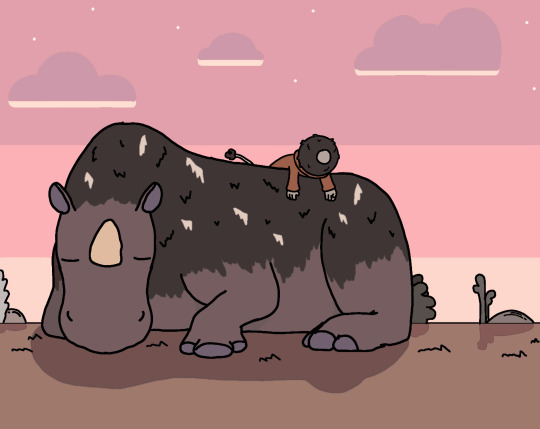



#drawing#hilda netflix#prehistoric creatures#life on our planet#twig hilda#tontu hilda#david hilda#frida hilda#hilda hilda#lalieudorhynchus#elasmotherium#gigatitan#titanis
8 notes
·
View notes
Text
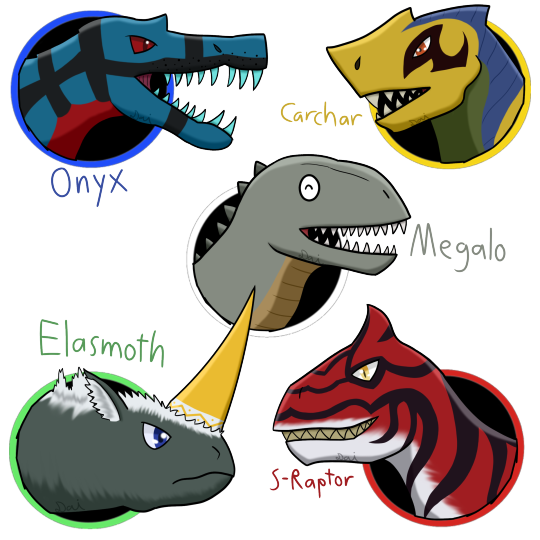
Fossil Fighters posting!
Just a doodle featuring my favourite vivosaurs of each attribute: Onyx (Baryonyx) for Water, Carchar (Carcharadontosaurus) for Earth, Megalo (Megalosaurus) for Neutral, Elasmoth (Elasmotherium) for Air, and S-Raptor (Sinraptor) for Fire.
#fossil fighters#vivosaur#baryonyx#carcharodontosaurus#megalosaurus#elasmotherium#sinraptor#doodle#dinosaur#dinosaur art#prehistoric mammals#woolly rhinoceros#woolly unicorn#artisits on tumblr#paleoart#prehistoric
44 notes
·
View notes